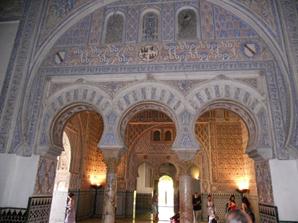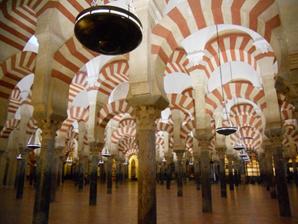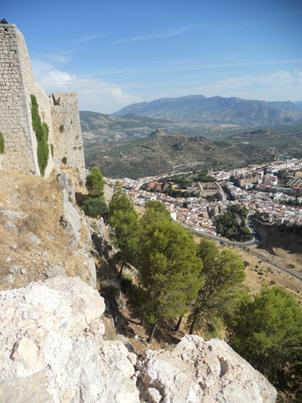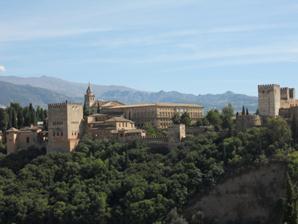I am no historian. But I am passionate about historical fiction. And the timelessness of love. I believe that if you are determined, have a vivid imagination, and are willing to pay your dues and invest the proper amount of time and energy, you can enter history. Step into the action, awaken names and places, see what they saw, feel what they felt, think what they thought, love as they loved, die as they died.
Yes, you must locate some good reading material and digest those whole, chew them up and sometimes even spit them out. Wrestle with them. As I said, pay your dues. Then you must set aside all the facts you have so painstakingly made your own and go visit the darn place so you can absorb the sights and sounds and smells. Do all these things properly, toss in a little luck, and you can indeed bring a dead place to life, awaken a time long past, enter history, breathe it. I do believe that. Such is the magic of well-executed historical fiction.
During my sabbatical at Georgia Tech in the fall of 2010, following nine months of reading, hard thinking and obsessive straining of my imagination with all sorts of images of medieval Granada, I finally ventured to Andalusia, remarkable place that it remains to this day. I traced a big circular arc; Seville, Córdoba, Jaén, Granada.
I roamed the streets of Seville, slurped my delicious orange salmorejo (tomato soup topped with ham and egg) at the rowdy tapas bars as the dozens (hundreds!) of Iberian hams dangled above my head. I heard the distant Arab whisper buried deep within the rich, tortured sounds of flamenco, stared skyward in the Hall of the Orange in the Alcazar, traced the Arabic on the stucco walls Pedro copied from the Comares Palace.

Next I wandered the magnificent, unmistakable red and white columned arches of the fabulous Mezquita in Córdoba, for hours and hours, relishing the time alone before the inevitable tour buses arrived. I even attended Mass inside the Mezquita, sad irony of ironies. I chased steaming three-inch thick buttery potato tortilla with a cold cerveza. Daily! I sat in the Plaza de la Corredera and tried to conjure the terror of the burnings held there during the Inquisition.

I stayed in the exquisite Parador (state-owned luxury hotel) nestled beside the ancient Castillo de Santa Catalina, perched high atop the mountain towering over Jaén. I stood with Chandon, hand resting on the giant cross, as we scanned the battlefield together.

Finally, my bus wove its merry way among the rolling hills and endless olive groves, arriving at last in Granada, my heart pounding, pounding, as I craned to steal my first glimpse of my beloved Alhambra. I planted myself in a hotel off the Plaza Nueva, climbing over and around and through the Alhambra and the Albayzín, day after day, even absorbing the palace and Generalife by moonlight. Twice.

I climbed each morning from my hotel through the Pomegranate Gate and entered the Alhambra through the Justice Gate, just like Chandon. I secured my thimble of sweet coffee and made my way to the big chestnut tree that towers now over the hammam Salamun and Chandon luxuriated in off the Upper Royal Road in the medina. There I wrote.
I sneaked a snip of myrtle from the Comares Palace as I peered up at the jalousie windows on Layla’s suite and then across to Chandon’s room, visualizing their all-clear signals by candlelight. I awakened their budding love in my mind, smiled at the bravado of their midnight rendezvous, their secret kisses and stolen glances, transported back to my own delicious early years with my Maria.
I stood agape at the marvels of the Hall of the Ambassadors, the Hall of the Two Ladies, the Hall of the Abencerrages. It was easy to picture Sultan Muhammad in his element there, no more difficult for Ibn al-Khatib, Zamrak, the Royal Harem. I dipped my fingers in the fountains and pools of the Partal Gardens, witnessed the Brethren of Purity in all black and hushed and secret in the Partal Oratory under the new moon.
I climbed the Water Stairway in the Generalife, located the secret space of my young lovers’ first encounter with tawhid under the starlight so many, many years ago. I was there. I even jumped the security fence and found the Royal Cisterns that powered the palace fountains those many centuries ago. It was a magical time of discovery for me, an awakening of six hundred years of silence.
The great service of historical fiction, it seems to me, lies in the bringing of a time and a place long dead magically back to life. This was my primary aim in writing this book. That, and to share my own small understanding of the truth and holiness and timelessness of the love I have come to know with my wife of 30 years, my Maria.
Al-Andalus desperately deserves remembering. This was no ordinary time or place. Our world aches for its memory, aches. Medieval Muslim Spain was a head-spinning intersection of three great cultures, three great religions, three great languages – Islam, Christianity, Judaism. Remarkably, for long stretches of time not far removed from our young lovers, all three religions lived together in something closely approximating harmony, following the enlightened Arab Muslim dictates of mutual respect and religious tolerance. Convivencia (coexistence). Tense, historical boundaries between the Muslim, Christian and Jewish peoples softened, then blurred. Languages were shared by all, cultural and intellectual achievements celebrated by all. Mutual acceptance and tolerance naturally blossomed with the lowering of time-honored artificial barriers. Love inevitably began to cross ethnic and religious dividing lines, just as in my book. Love always finds a way. Beautiful convivencia. If only we could recall that time.
To approach al-Andalus as a modern reader, you must put aside the common association of the word “medieval” with “Dark Ages,” by standard inference a time of backward, unclean, uneducated peoples mired in a stagnate civilization. This pat answer has no value here. In al-Andalus, there was an unprecedented bubbling up of so much intellectual prowess and cultural sophistication as to make the lettered among us feel like bumpkins. There was rediscovery, translation and absorption of Greek and Roman and Far-East knowledge lost for a millennium, and the consequent rebirth of science, medicine, architecture, engineering and agriculture. There was enough poetry, music, song and philosophy to make the ancients proud. And books. My goodness the books. At the beginning of the 11th century, there were four hundred thousand volumes in the Great Library of Córdoba alone! The largest library in Christian Europe, at the University of Paris, held four hundred volumes! Dark Ages? I think not.
With predictable irony, surrounding all this cultural enlightenment was enough political wrangling, arm-twisting, court intrigue and diplomatic maneuvering to dizzy the most jaded, jet-setting, modern head of state. Political expediency was the only law of the land. Muslim was allied with Christian against Christian, Muslim against Muslim, brother against brother. Assassins prowled the Royal Courts. And war. Of course, war. Close-fought with clenched teeth and sweaty brow, with gilded sword, crossbow and ugly studded mace, the bloodied land cloaked in shocking, casual violence and death. War was waged then for the exact same reasons as today, these six hundred years later: Ego, power, greed, religious intolerance, misguided do-gooding, ignorance. As toxic then as now to the voices of reason, to culture, to civilization. Sadly, to love.
Al-Andalus, bright light of cultural and religious tolerance, intrepid explorer of the mind and soul, boiling caldron of enlightened thinking, place of song and dance and dazzling colors. Alas, she did not stand the test of time. Born in 711, subdued finally in 1492 at the hands of Isabel and Fernando, the Catholic Monarchs of Columbus fame. But consider – nearly 700 years of inspiration! Al-Andalus left a deep legacy that molded then fired the clay that was to become modern Europe, and by extension the Americas and her peoples.
In our so-called modern era, with its hurtful religious and cultural tensions, rife with terrorism of the innocents, suicide bombings and fanatical intolerance, ancient al-Andalus has much to teach us all – Muslim, Christian and Jew alike. Al-Andalus, a distant beacon of light, perhaps the world’s greatest forgotten reminder that a peaceful future among us three is indeed a possibility, provided we make the difficult but necessary choice to set aside our differences and honor our shared sacred roots. Tolerance and mutual respect. Why is this such an impossible concept?
Emeralds of the Alhambra tells a six-hundred year old story of love, yes, but also a story of a largely unknown past we all need to remember, and memorize, if we are to place any real hope in an olive-branched world for our dear children and grandchildren.